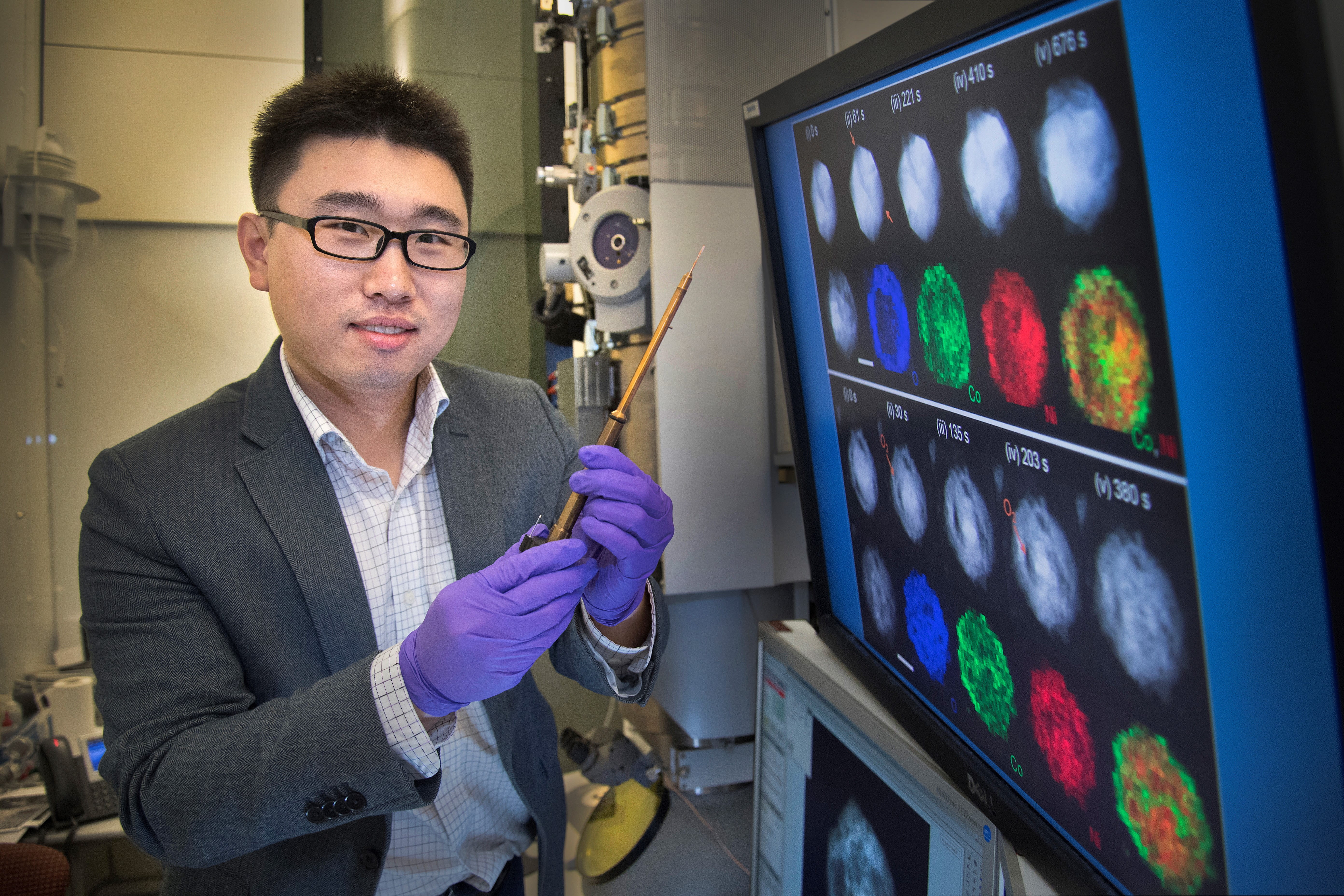Taking the ‘waste' out of nuclear waste
While spent nuclear fuel continues to pile up by the ton across the United States, engineering professor Mikael Nilsson says the solution is clear: recycle it at the commercial nuclear power plants that create it.

While spent nuclear fuel continues
to pile up by the ton across the United States, UC Irvine’s Mikael
Nilsson says the solution is clear: recycle it at the commercial nuclear power
plants that create it.
More than 96 percent of the waste –
namely uranium and plutonium – can be used again, says the assistant professor
of chemical engineering & materials science, and plants in Europe and Asia are doing just that. Nilsson’s laboratory research
is focused on how to recycle or destroy the remaining 3 to 4 percent.
“Some people call it nuclear waste,
but we’ve stopped using that term,” he says. “That implies it’s useless, and we
don’t think that’s true. It can still
be used.”
Currently, about 65,000 metric tons of commercial spent nuclear fuel is stored at 75 sites in 33 states, and the amount is growing by about 2,000 metric tons a year, according to federal records, some of it with a half-life of millions of years. There have been decades-long battles over the construction of a central repository under Nevada’s Yucca Mountain and the transport of such waste through American communities.
Nilsson is from Sweden, where nuclear generation accounts for nearly half of all electricity, and he sees it as key to the future of energy in the U.S. At UCI since 2009, he’s heartened by developments under President Obama, including a blue-ribbon commission set up to examine future options for nuclear energy, such as recycling. An initial report is expected in July. In addition, UCI is joining six other universities and four federal laboratories in a new consortium organized by the National Nuclear Security Administration to explore matters related to the prevention of security breaches.
“I’m a believer in nuclear power, because coal has its own issues, and solar doesn’t always work if it’s nighttime or you’re in Seattle,” Nilsson says. “Any technology can be misused. Nuclear gives you a lot of power 24 hours a day, seven days a week, without any release of carbon dioxide. And we have large amounts of uranium and other natural resources available, if they’re used and reused right.”
Albert Yee, chair of the chemical engineering & materials science department, says: “It’s fabulous having Mikael in our department” because unlike many, he’s not put off by the thorny legal and environmental challenges associated with nuclear energy research.
“Mikael looks at it and says, ‘OK, it’s a problem. But it’s a problem we won’t have if we do something about it.’ For example, what do you do with the waste we have to live with, thanks to the advent of nuclear power? We’re just putting it off, literally burying it, and here we have a young professor who’s tackling it head-on. So he’s very courageous, very timely, and I think he will do a lot of great science.”
Nilsson notes that it was American researchers at Tennessee’s Oak Ridge National Laboratory who discovered in the late 1940s that plutonium and uranium – both key ingredients in nuclear fission – could be separated from other poisonous elements and returned to production.
Reprocessing has long been done in France, the United Kingdom and Russia – more recently in Japan and India. There has been hot debate in the U.S. and elsewhere about the practice, centered on accidental and controlled radioactive emissions into air and water and concern about the potential theft of plutonium by terrorists.
President Ford suspended commercial plutonium recycling in 1976 due to fears the material could be stolen for nuclear weapons proliferation. President Carter banned all commercial reprocessing a few months later. President Reagan lifted the ban, but no public subsidies were granted for costly start-ups. That may be changing.
But U.S. regulations allow no radioactive emissions from reprocessing plant smokestacks, which Nilsson calls a “zero tolerance” policy. In England, by contrast, controlled releases of some elements are allowed in amounts that quickly disperse in air or ocean water. Nilsson and other scientists believe the releases are well below dangerous levels. He also notes that there have been no thefts of plutonium from spent fuel stockpiles – but adds that it’s safer to get these radioactive materials back into production than let them sit.
At his security-conscious laboratory, Nilsson and his graduate students are attempting to isolate dozens of remaining elements in nuclear waste and simulate their effects so that they can be recycled or destroyed. Some, such as neptunium and other so-called “daughters of americium,” are among the most toxic and have very long half-lives. The elements are especially hard to recycle because they’re miniscule and mimic each other’s properties, making them extremely difficult to separate.
“We’re down to very small things, so it becomes more complex,” Nilsson says. He and his fellow researchers use a glove box outfitted with long, black hands to reach into an enclosed area and handle radioactive objects – which, he says, are all low dosage and not a major risk. But Nilsson and his team are careful. The laboratory doors are always locked, there are no seams in the floor that could trap material, and everyone uses a hand and foot sensor each time they exit to see if they’ve inadvertently come into contact with radiation.
“I’m not worried,” says Nilsson. “I see opportunities, not problems.”


